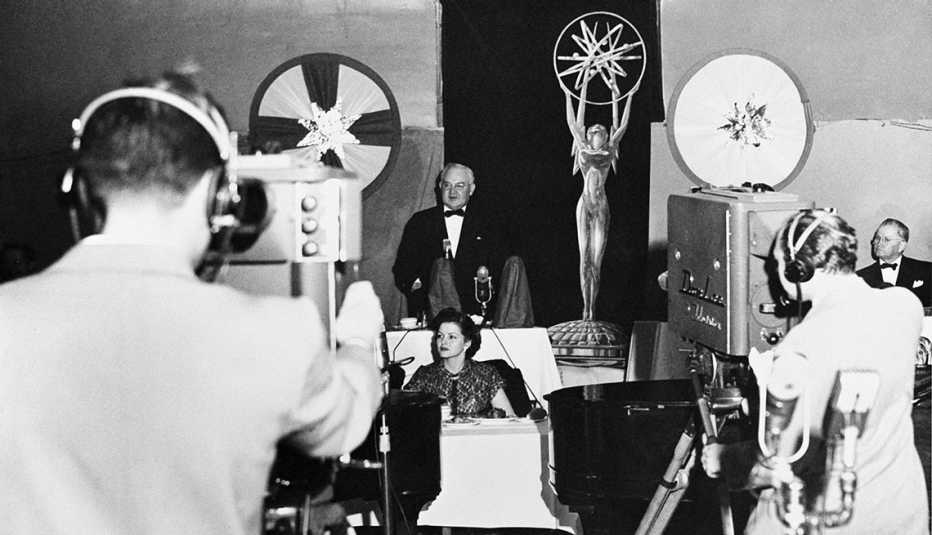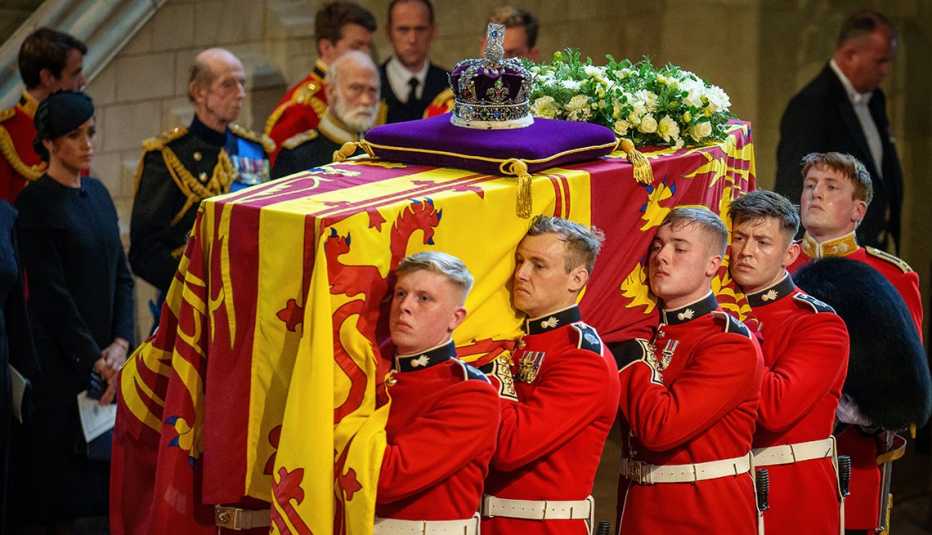AARP Hearing Center

In 1920, farmer Philo T. Farnsworth gazed at the parallel lines he’d plowed in his beet field and had an inspired thought: electrons could be lined up on a tube and transmit images. His “Image Dissector” invention helped create the TV industry, and we’ve been glued to the tube ever since America’s top radio star, President Franklin D. Roosevelt, made his — and the industry’s — telecast debut in 1939. But we tend to forget most of the countless shows we’ve watched — hey, it’s tough even to keep track of what’s on TV this week (unless you read AARP's weekly What to Watch column and our monthly updates on Netflix and Prime Video). To refresh your memory, here are the events, shows and scenes that truly made history — the 75 TV moments most worth remembering.
April 30, 1939
In the first TV telecast, FDR opens the New York World’s Fair.
January 25, 1949
At the first Emmy Awards, Pantomime Quiz Time wins the most popular television program award. The award was originally supposed to be called the "Ike," short for the iconoscope tube that made TV possible (originally invented to guide flying bombs in World War II). But President Eisenhower was called Ike, and the device used in TVs was called the camera image orthicon tube, so they changed it to the "Immy," then feminized it to the "Emmy."
September 15, 1952
In one of the most celebrated episodes of TV’s No. 1 show, I Love Lucy, Lucille Ball works at a candy factory and can’t keep up with the conveyor belt, so she stuffs her mouth with chocolates.
September 23, 1952
Vice Presidential nominee Richard Nixon delivers his emotional “Checkers speech," saying he plans to keep the cocker spaniel named Checkers that a citizen gave his 6-year-old daughter, Tricia, and saves his career from a political donations scandal.
June 2, 1953
Defying advisors including Winston Churchill, England’s Queen Elizabeth II, 27, allows TV cameras into Westminster Abbey for the first time, so that 20 million Britons (and millions more in America) could watch her coronation — the first TV event whose audience outnumbered any radio audience.
September 11, 1954
Reality TV begins with the Miss America pageant’s TV debut.
September 9, 1956
Sixty million watch Elvis Presley on The Ed Sullivan Show, 82.6 percent of the TV audience. Despite Elvis’ scandalous swiveling hips, Sullivan calls him “a real decent, fine boy.”
September 26, 1960
In the first televised presidential debate, an estimated 70 million see sweaty candidate Nixon seemingly win on points against opponent John F. Kennedy but lose on looks.
September 30, 1960
The Flintstones make animation fun for the whole family, popularizing Fred’s catchphrase “Yabba-Dabba Doo!” (inspired by the Brylcreem slogan “A little dab’ll do ya”)
March 2, 1962
On The Twilight Zone, aliens invade earth, tell humans their goal is “to serve man” — turns out they mean to cook and eat us all.
November 22, 1963
Near tears, Walter Cronkite breaks into the broadcast of As the World Turns to announce the assassination of President John F. Kennedy.
November 24, 1963
A CBS News camera records nightclub owner Jack Ruby’s assassination of JFK assassin Lee Harvey Oswald. In 2018, that camera sells to a collector for $16,000.
February 9, 1964
Seventy-three million viewers watch The Beatles debut on The Ed Sullivan Show, the antidote to the nation’s grief over the fallen young President.


December 29, 1967
The ordinarily somber sci-fi show Star Trek does a comic episode about cute, uncontrollably reproducing furry creatures invading the U.S.S. Enterprise, “The Trouble With Tribbles,” inspired by invasive rabbits in Australia.
July 20, 1969
Ninety-three percent of Americans watch Neil Armstrong take one giant leap for mankind onto the moon.
September 25, 1970
The Partridge Family debuts. Star Shirley Jones had turned down the mom role on The Brady Bunch because she didn’t want to spend her time making sandwiches. Her band’s first No. 1 hit, “I Think I Love You,” outsells The Beatles' “Let It Be.”
March 30, 1971
In the proud tradition of Leave It to Beaver, which depicted the first toilet on TV in 1957 in an episode where the kids hide a pet alligator in the toilet tank, All in the Family features TV’s first toilet heard flushing.
April 2, 1974
A streaker races past David Niven, who’s about to present the Oscar for Best Picture. Niven quips, “But isn’t it fascinating to think that probably the only laugh that man will ever get in his life is by stripping off and showing his shortcomings?”
October 25, 1975
Mary finds it impossible not to burst out laughing at the funeral of a famous clown in the legendary Mary Tyler Moore Show episode “Chuckles Bites the Dust.” The New York Times calls it “the funniest half-hour in television history.”
November 13, 1976
In The Carol Burnett Show’s most famous episode, “Went With the Wind,” she channels Scarlett O’Hara and wears an actual curtain for a dress, explaining, “I saw it in the window and I just couldn’t resist it.” The laugh is the longest in the show’s history and has to be edited down to fit on TV.


January 30, 1977
Until the M*A*S*H finale in 1983, the 100 million viewers of the final episode of Alex Haley’s Roots, dramatizing the author’s search for his family’s African past and American experience, is the biggest audience for any show.
September 20, 1977
Fonzie (Henry Winkler) jumps the shark on water skis on Happy Days. In 1985, college student Jon Hein coins the phrase “jumping the shark” to signify the point where a show is doomed. It catches on big time; in 2006 Hein sells his company, Jump The Shark, Inc., for over $1 million. Later, on Arrested Development, Henry Winkler jumps over a tiny shark on a dock. Viewers get the joke.
February 22, 1980
The U.S. Olympic hockey team beats the heavily favored Soviets in what became known as the "Miracle on Ice.”
November 21, 1980
Eighty-three million watch TV’s trashiest show, Dallas, to find out who shot the nastiest man on TV, J.R. Ewing (Larry Hagman). Spoiler: It was his mistress Kristin Shepard (Bing Crosby’s daughter Mary Crosby).
December 8, 1980
Howard Cosell interrupts Monday Night Football to announce the assassination of John Lennon.
















































































You Might Also Like
Alan Cumming: ‘We Overly Worship the Altar of Youth’
'The Traitors’ host talks about why he’ll never stop being eclectic and hosting AARP’s Movies for Grownups Awards
'Finding Your Roots' Host Shares Celebs' Family Secrets (and How He Made Sharon Stone Cry)
Henry Louis Gates, Jr. gives AARP a sneak preview of his ancestry show's 2025 season
Can You Earn a Dy-NO-mite Score on Our Quiz?
Test your knowledge of TV’s most memorable catchphrases
Recommended for You